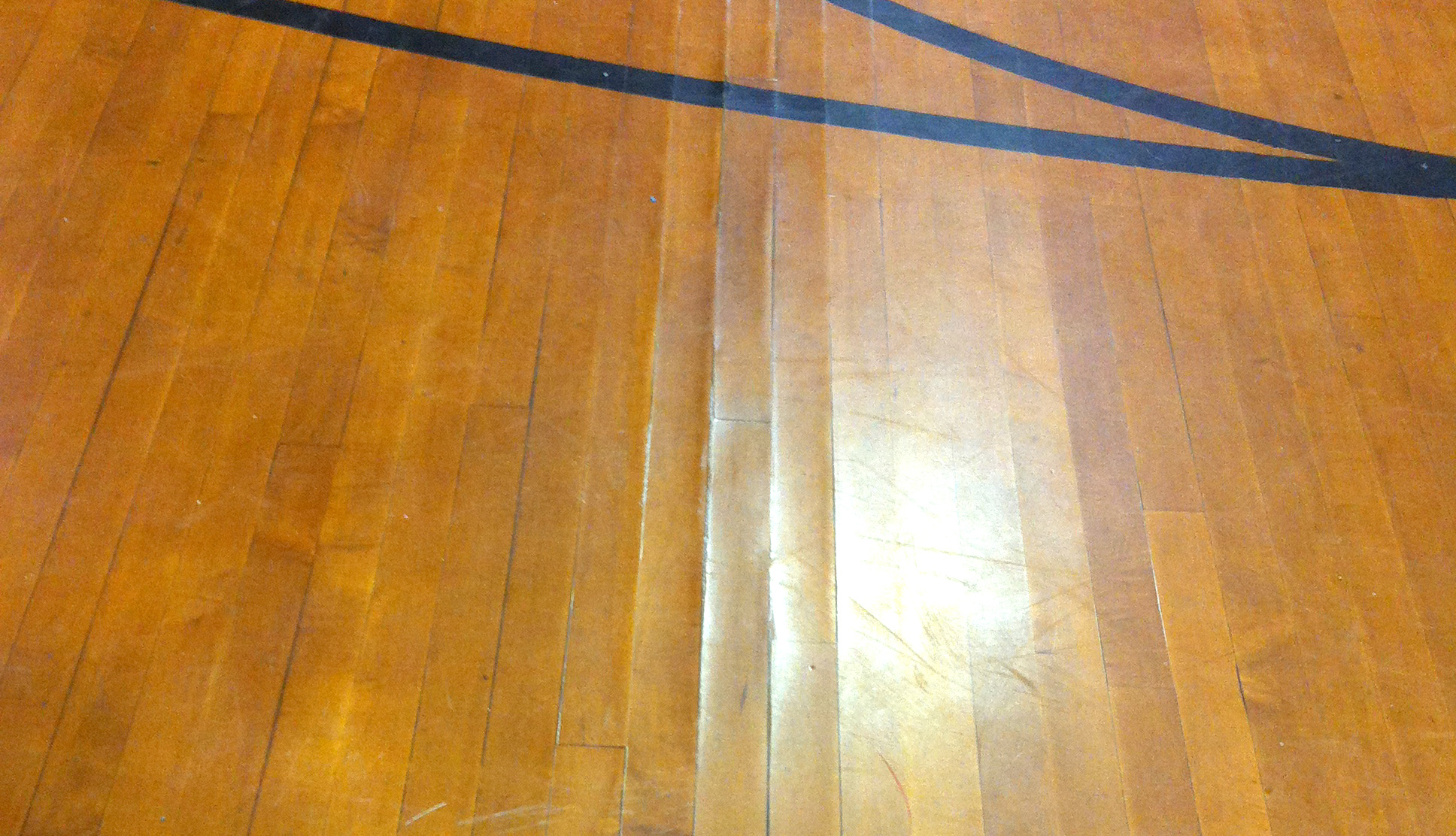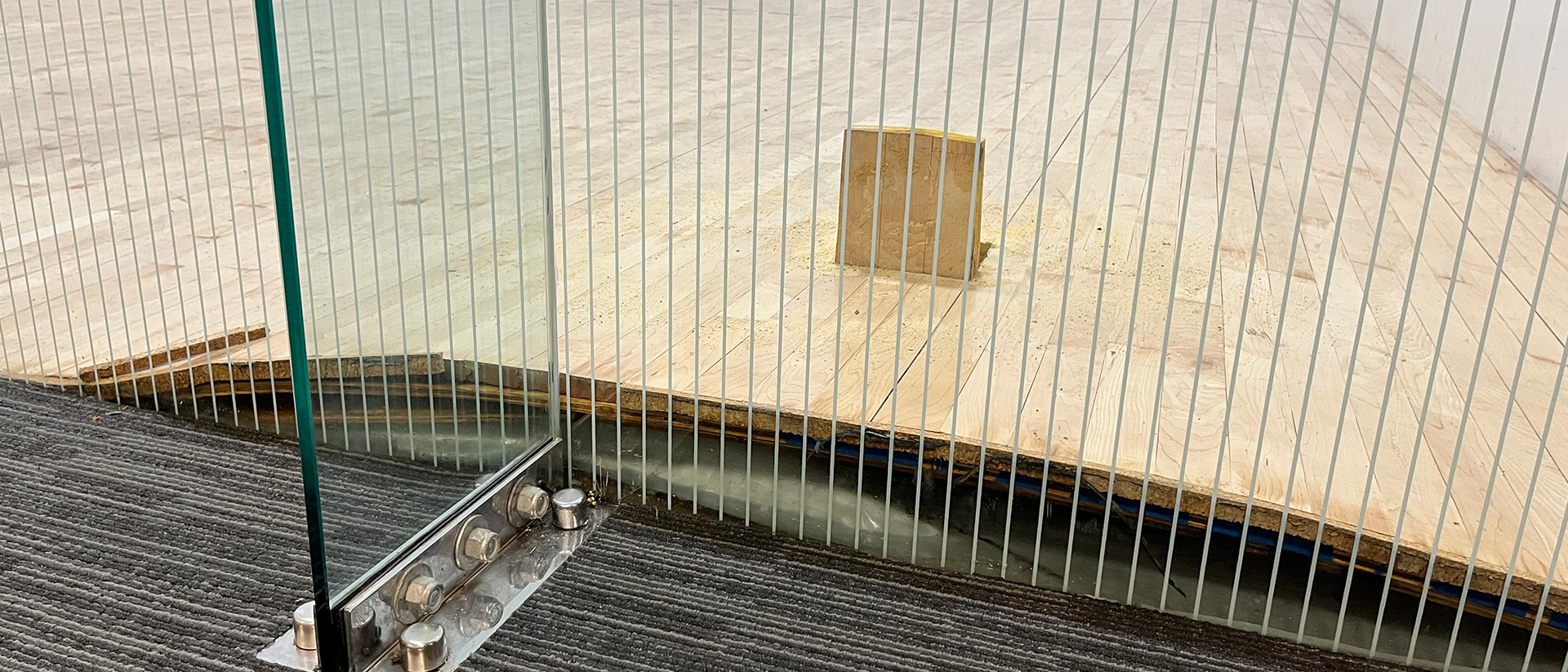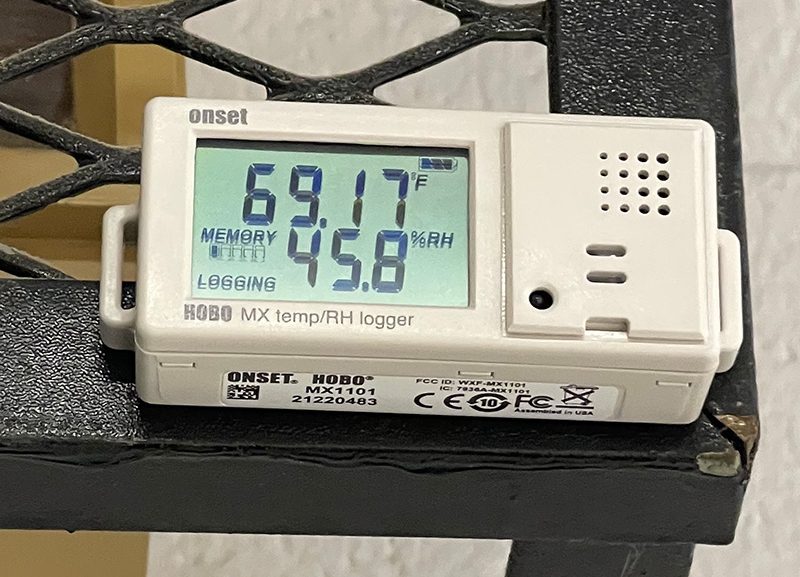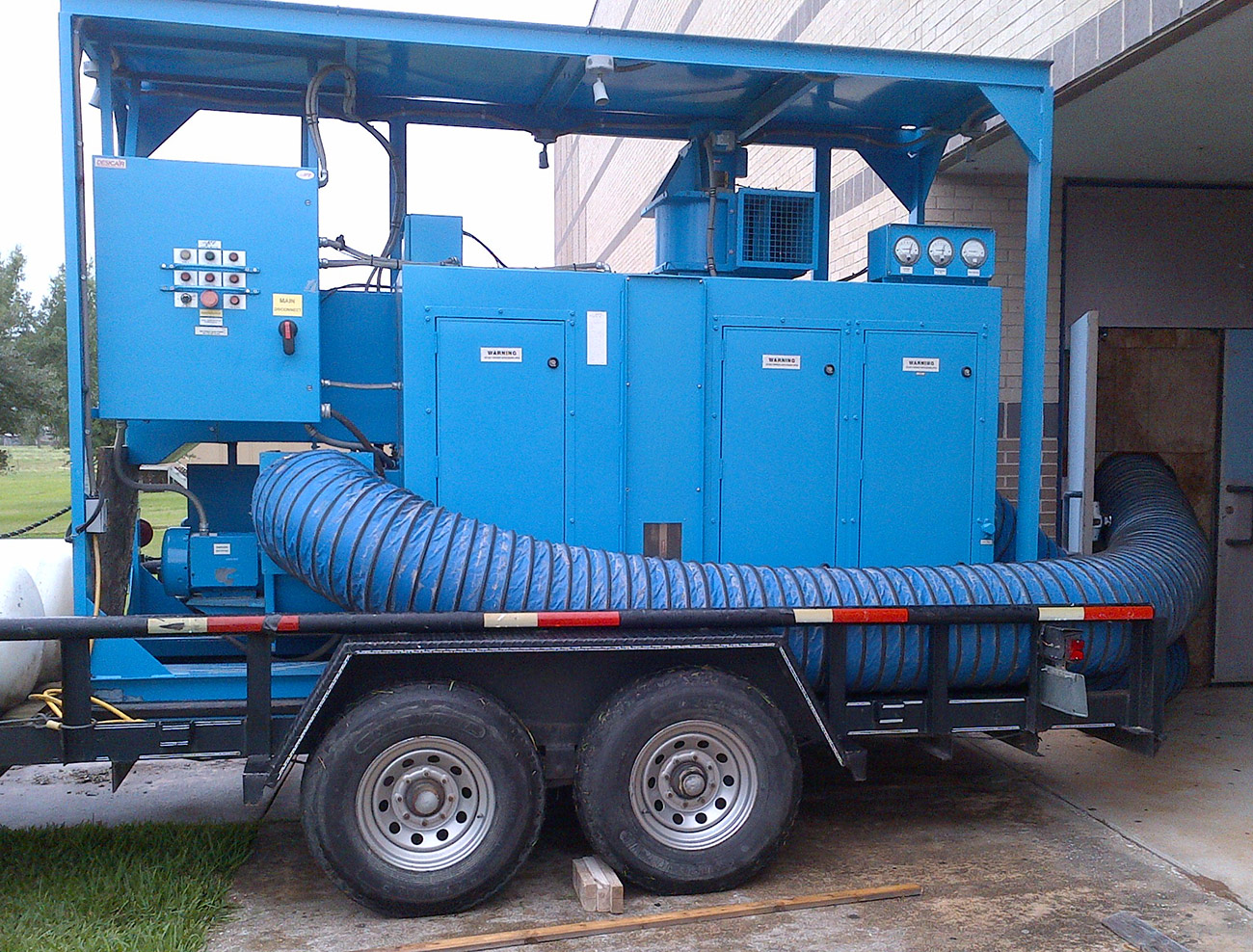Gym Floor Water Damage
Gym floor water damage is one of the many hardwood horrors. If left untreated, water damaged hardwood becomes warped, damaged and unusable. This results in poor safety and performance for your athletes. Not to mention water-damage leads to costly repairs.
With that in mind, it is important for gym maintenance to understand the causes of gym floor water damage. Knowing the causes can help facility staff to mitigate water-damage. Otherwise, they will have an expensive nightmare on their hands. In this article, QHF hopes to answer your questions about the causes, signs and management of gym floor water damage.
Main Causes of Gym Floor Water Damage


-
Poor Maintenance Practices
-
High Indoor Relative Humidity (HVAC)
-
Burst Pipes / Leaks
-
Natural Disasters: Floods / Freeze
Signs of Gym Floor Water Damage
If left unchecked for extended periods, your water-damaged floor will begin to buckle. A buckled floor pulls up from the subfloor in big wooden waves.
Within several minutes, a water can leak between the boards and spread under your hardwood floor. Again, water damaged floors render your gym unsafe for play and in need of replacement.
Cupping and Crowning


Hardwood gym floor boards absorb and release moisture naturally as they contract and expand. When boards absorb excessive levels of moisture, cupping and/or crowning occurs.
Gym floor boards are unable to expand horizontally when water damage seeps into them. This leads to moisture levels at the bottom of the boards exceeding the top of the board. Cupping is the term for maple board edges being forced upward, forming a cup. Inversely, "crowning" occurs when the moisture levels in the wood cause the boards to swell in the center.
Compression Set


"Compression set" occurs when unmanaged cupping sits for a long period of time. In other words, compression sets in as cupped floors dry out. Thus it is important to address cupping as soon it is noticed. If compression set can be sanded depends on the amount of water remaining in the maple.
Water Damage Management
Take Action Fast
What To Do:
- Stop the source of water
- Clean-up any standing water
- Call a professional floor repair company
Protect Against Water Damage
Protect Against Water Damage
Annual refinishing helps to protect floors from minor water damage. It is harder for minor spills to penetrate layers of floor finish. Inversely, newer floors are more susceptible since they have fewer coats of finish.
Gym Floor Water Damage Repair Process


There are several techniques used to effectively dry hardwood flooring. First, accurately monitoring moisture data determines how severe water damage is. Monitoring instruments provide important indications of drying progress. A wood-penetrating moisture meter is an essential tool for measuring wood moisture content. This tool measures the moisture content of the wood during and after restoration. Moisture readings are taken at both the top and bottom portions of the wood planks.
From there one can determine the equipment operations that are necessary for complete restoration. This constant analysis allows one to adapt and adjust drying techniques to properly restore the wood floor.
Why is drying required?
Wood expands when exposed to water. This causes high levels of humidity and moisture content in the wood. Your wood sports floors will then cup and buckle as it expands. As we stated above, the wood will eventually buckle and raise from the sub-floor during cupping.
A common mistake is to sand the cupping out of a floor. The water-damaged gym floor must be properly dried before sanding and refinishing. Otherwise, wood flooring is permanently damaged if you remove the raised edges.
Desiccant Dehumidification


Desiccant dehumidification is a process that helps remove water damage. This process works best when the sports flooring system uses "sleepers" that separate the boards from a concrete slab. In this case, desiccant dehumidification process returns wood to a naturally dry state with little to no sanding.
Desiccant dehumidification processes air humidity in the air to reduce moisture levels. Air from the water damaged region passes through a silica gel rotor to become becomes dry. Extremely dry air "pulls" the moisture out of wet wood since it has a 5% relative humidity.
Water tries to escape and seep into adjacent wood boards. Therefore, it is important to continuously inspect the drying floor as excess moisture is removed.
Gym Floor Replacement
While sanding may be able to address minor water-damage issues, it will not fix the worst damage. You will need to replace subflooring systems if compromised by water. One can see the extent of water damage by removing subflooring. Water damage is typically far worse than what you see on the floor surface. This is why gym floor repair pros cut out flooring beyond the initial damage.
After ensuring proper concrete slab moisture levels gym floor professionals can reinstall subfloor systems. New maple will cover replaced subflooring. Then QHF will sand, paint and finish floors to closely match the existing floor. Quality Hardwood Floors aims to return water-damaged gyms quickly. As always, our aim is to ensure your gym floor is safe for athletes.

The Truth About Gym Floor Auto Scrubber Use - Quality Hardwood Floors
October 6, 2021
[…] kids, water and wood flooring are not friends. As stated above, a gym floor auto scrubber puts water and cleaning chemicals on […]
Gym Floor Relative Humidity: De-Mystified - Quality Hardwood Floors
November 16, 2021
[…] humidity goes outside of this margin. Signs of compromised wood flooring can look similar to the affects of water damage. However, low-humidity levels can cause damage too. Let’s review signs that humidity […]
New Gym Floor Installation - Quality Hardwood Floors
February 10, 2022
[…] you spotted a problem soon enough to stop wide-spread damage to your gym floor. And still, water-damage troubles spread even after the storm. This is why it’s important to get a hold of your gym floor […]
Gym Floor Auto Scrubber Truths - QHF Sports
October 18, 2022
[…] kids, water and wood flooring are not friends. As stated above, a gym floor auto scrubber puts water and cleaning chemicals on the wood. These […]
Reclaimed Gym Flooring? - QHF Sports
December 7, 2023
[…] removing the wood flooring would be from damage. Most sports floor problems consist of extremely warped boards, cracked and splintering boards or dead spots in the flooring. Obviously any damaged hardwood affects the floor's playability and […]